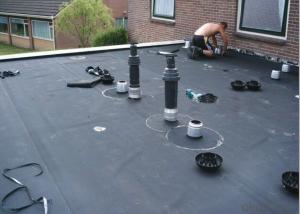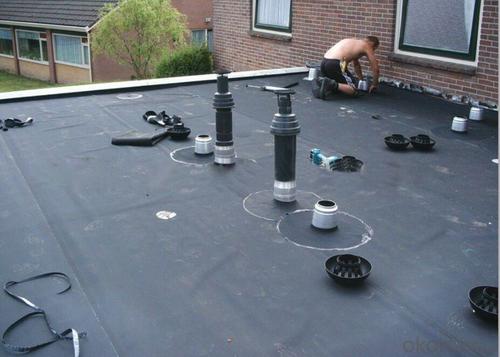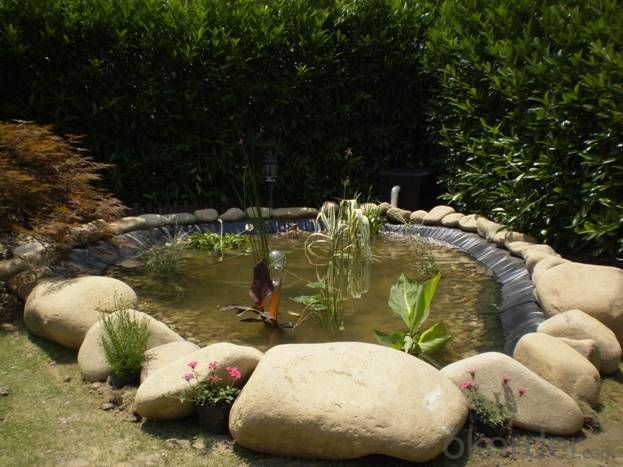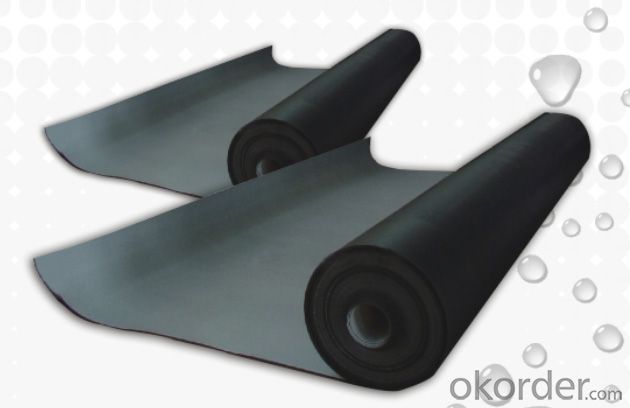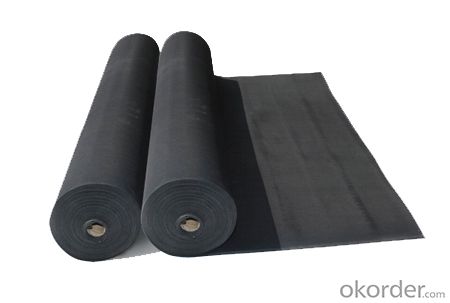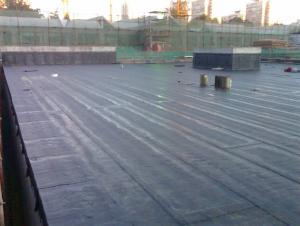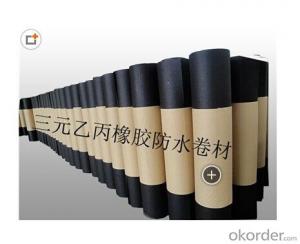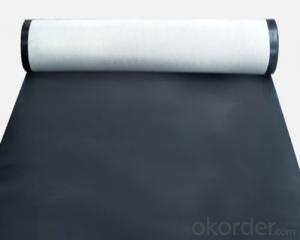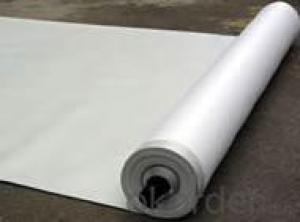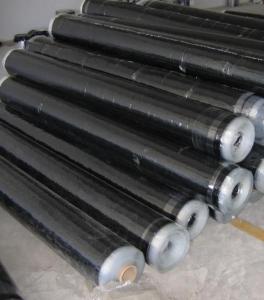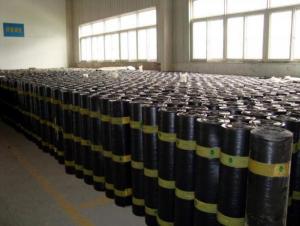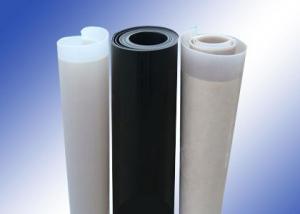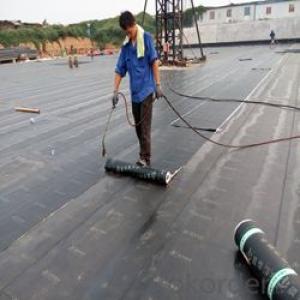EPDM Rubber Material Waterproof Membrane for Rooftop
- Loading Port:
- Shanghai
- Payment Terms:
- TT OR LC
- Min Order Qty:
- 50000 m²
- Supply Capability:
- 5000000 m²/month
OKorder Service Pledge
OKorder Financial Service
You Might Also Like
EPDM Rubber Material Waterproof Membrane for Rooftop
Description Of EPDM Rubber Material Waterproof Membrane for Rooftop:
This waterproof coiled material is of high elasticity with best performance among high polumer waterproof coiled material in the world.It is also the most typical one in the world.Waterproof coiled material made of ternary ethylene-propylene rubber is produced with the use of the most advanced contiuous extrusion and vulcanization technology and related equipments which are specially designed for production of such product.It is good in compactness,without bubble and performance difference in length and breadth,perfomances reach or exceed the demands of GB18173.1-2000 standard.
Main Features of EPDM Rubber Material Waterproof Membrane for Rooftop:
1.EPDM waterproof membrane for bridge engineering waterproof
2.EPDM waterproof membrane for water conservancy projects ,such as river bank,lake dam seepage.
3.EPDM waterproof membrane for the municipal engineering.
4.EPDM waterproof membrane for aquaculture.
Specifications of EPDM Rubber Material Waterproof Membrane for Rooftop:
| Number | Item | Unit | Value | |
| 1 | Size Variation | Thichness | % | ±10 |
| Width | % | ±1 | ||
| Length | % | Allowed negative | ||
| 2 | Breaking tensile strength at normal temperature | Mpa | ≥7.5 | |
| Breaking tensile strength at 70°C | Mpa | ≥2.3 | ||
| 3 | Breaking elongation at normal temperature | % | ≥450 | |
| Breaking elongation at -20°C | % | ≥200 | ||
| 4 | Tear strength | KN/m | ≥25 | |
| 5 | Impermeability(30min) | * | 0.3Mpa no leakage | |
| 6 | Bending at low tempreture | °C | ≤-40 | |
| 7 | Stretch tensor at heating | Elongate | mm | ≤2 |
| Shrink | mm | ≤4 | ||
| 8 | Air oven aging(80°C×168h) | Tensile strength at break retained | % | ≥80 |
| Elongation at break retained | % | ≥70 | ||
| 9 | Anti-alkali | Tensile strength at break retained | % | ≥80 |
| Elongation at break retained | % | ≥80 | ||
| 10 | Nuture weathing at manual simulation | Tensile strength at break retained | % | ≥80 |
| Elongation at break retained | % | ≥70 | ||
Applications of EPDM Rubber Material Waterproof Membrane for Rooftop:
Widely used in roofs, basement, toilet ,swimming pool, and all kinds of industry and civil building waterproofing, reservoir, vivicism, bridge, underground, tunnel and dam waterproofing ,especially to the keystone waterproofing projects which is durability, high corrosion resistance and easy deformation.
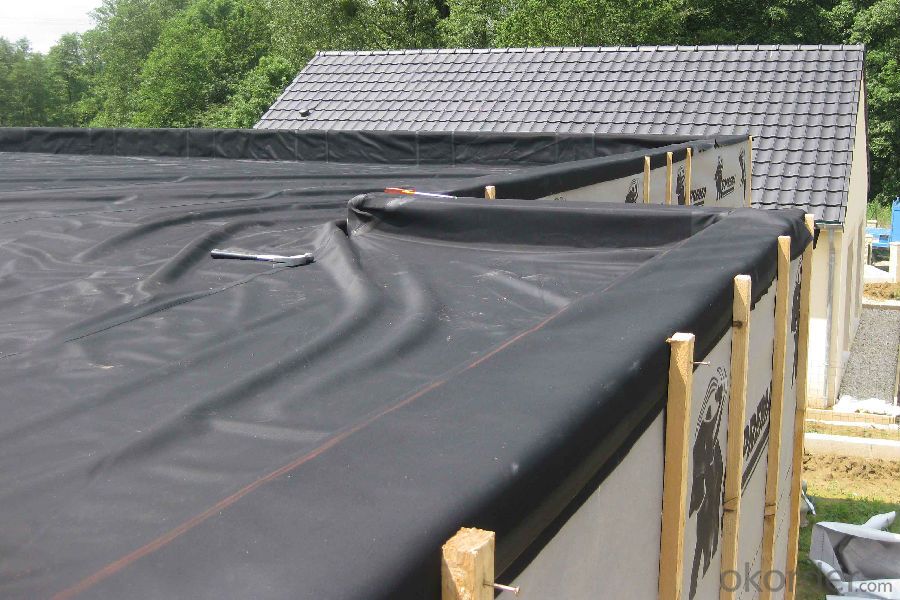
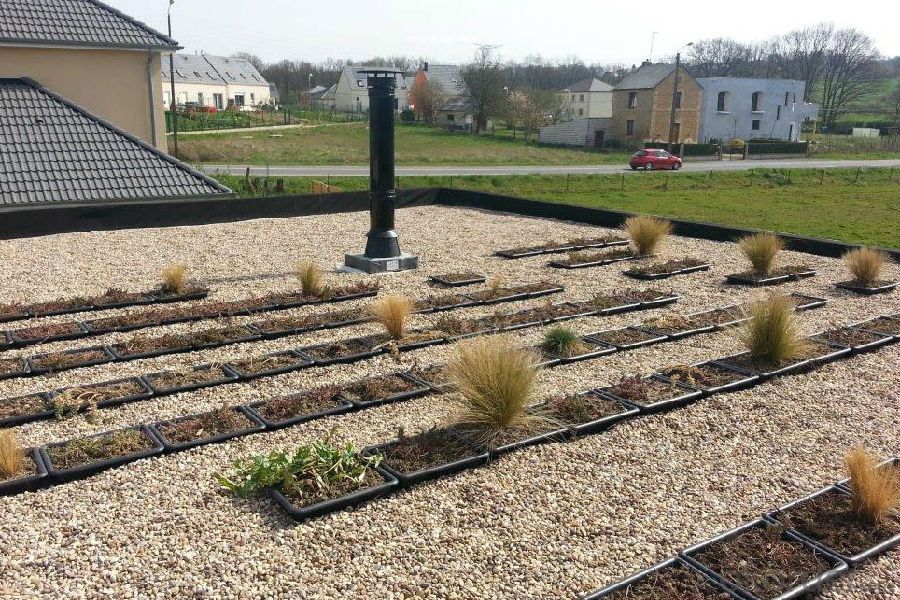
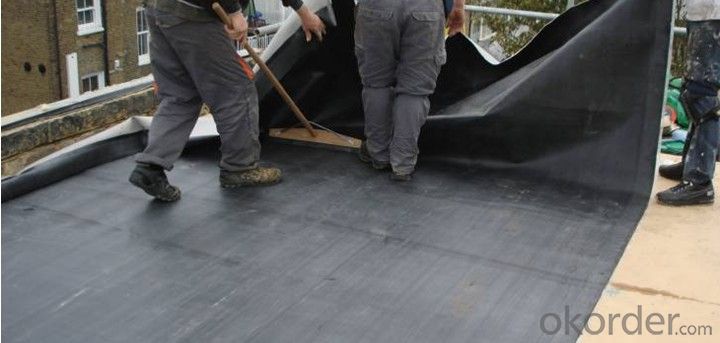
IMages of EPDM Rubber Material Waterproof Membrane for Rooftop:
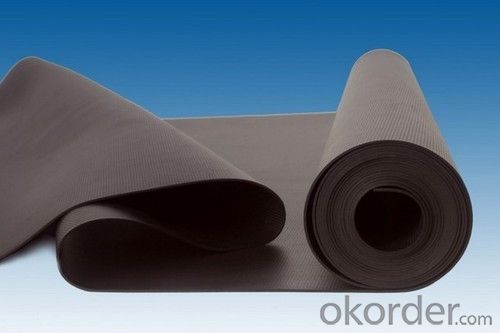
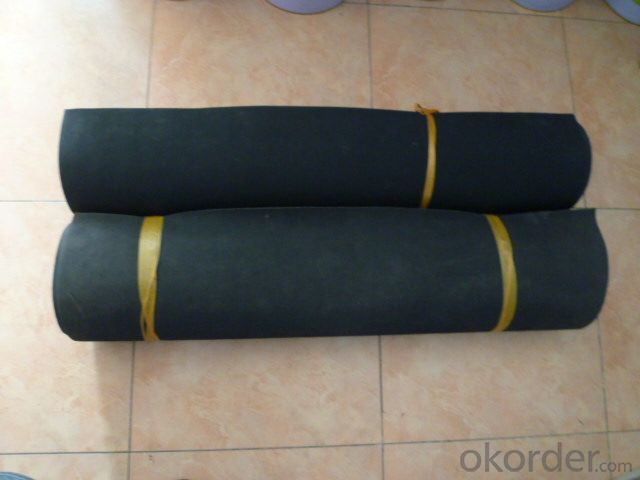
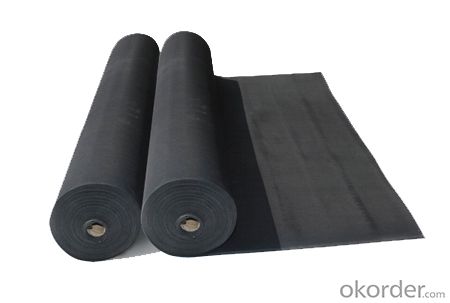
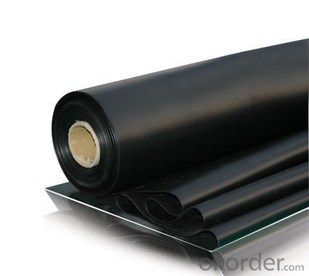
FAQ of EPDM Rubber Material Waterproof Membrane for Rooftop:
1. What are we supplying?
We are specialized in producing Colorful Asphalt Roof Shingle, SBS/APP modified bitumen waterproof membrane, Self adhesive bitumen waterproof membrane, PVC waterproofing membrane, EPDM rubber roofing membrane, Single Component Polyurethane Waterproof Coating, and Spray Polyurea Waterproof Coating
.
2. How Many years experience do we have?
We have been exported to more than 20 countries in the past 15 years.
3. How long do we usually reply your request?
We always reply our customer within 24 hours.
- Q: Is a waterproofing membrane resistant to hydrocarbons or oils?
- Typically, waterproofing membranes are resistant to hydrocarbons and oils. The materials utilized in these membranes, such as bitumen or synthetic polymers, are specifically engineered to possess strong resistance against different chemicals, including hydrocarbons and oils. This resistance guarantees that the membrane remains efficient in obstructing water penetration even when confronted with these substances. Nevertheless, it is crucial to acknowledge that the resistance level may differ depending on the type and quality of the waterproofing membrane. It is advisable to consult the manufacturer or supplier to ascertain the precise resistance capabilities of a given waterproofing membrane.
- Q: How does a waterproofing membrane handle temperature fluctuations?
- A waterproofing membrane is designed to handle temperature fluctuations by being able to expand and contract without compromising its effectiveness. It is made of materials that are flexible and can withstand extreme temperatures, ensuring that it remains intact and continues to provide protection against water infiltration.
- Q: Can a waterproofing membrane be used in coastal areas?
- Yes, a waterproofing membrane can be used in coastal areas. Coastal areas are prone to high levels of moisture and water exposure, making it essential to have effective waterproofing measures in place. A waterproofing membrane, when properly installed and maintained, can provide a protective barrier against water intrusion, preventing damage to structures and ensuring their durability. However, it is important to select a membrane that is specifically designed for coastal environments, as these membranes are typically more resistant to saltwater and have enhanced durability to withstand the harsh coastal conditions. Additionally, regular inspection and maintenance should be carried out to ensure the effectiveness of the waterproofing membrane in coastal areas.
- Q: Can a waterproofing membrane be used in swimming pools or other water features?
- Yes, a waterproofing membrane can be used in swimming pools or other water features to prevent water leakage and maintain a watertight environment.
- Q: How does a waterproofing membrane adhere to the surface?
- A waterproofing membrane adheres to the surface through a combination of mechanical and chemical bonding. The membrane is typically applied using a specialized adhesive or primer that helps create a strong bond between the membrane and the surface it is being applied to. The mechanical bonding occurs as the adhesive or primer penetrates into the pores of the surface, creating a physical bond between the membrane and the substrate. This helps ensure that the membrane is securely attached and able to withstand the forces it will encounter. Chemical bonding also plays a crucial role in the adhesion process. The adhesive or primer contains chemicals that react with the surface, forming chemical bonds with the membrane. This chemical reaction helps create a durable and long-lasting bond that can withstand environmental factors such as temperature changes, moisture, and UV exposure. Additionally, the composition of the waterproofing membrane itself plays a role in its adhesion. Many membranes are made of materials with inherent adhesive properties, such as bitumen or rubberized asphalt. These materials have natural tackiness, which allows them to adhere to the surface without the need for additional adhesives or primers. Overall, the adhesion of a waterproofing membrane to a surface is a combination of mechanical and chemical bonding, achieved through the use of specialized adhesives or primers. This ensures a strong and durable bond that effectively protects the surface from water damage.
- Q: Is a waterproofing membrane resistant to freeze-thaw cycles?
- Yes, a waterproofing membrane is typically resistant to freeze-thaw cycles. The membrane is designed to withstand extreme temperature changes without compromising its waterproofing capabilities.
- Q: Can waterproofing membranes be used on elevator pits?
- Yes, waterproofing membranes can be used on elevator pits. Elevator pits are prone to water infiltration due to their location below ground level, making them susceptible to water damage and leaks. Waterproofing membranes provide an effective solution to prevent water penetration and protect elevator pits from moisture-related issues. These membranes are designed to create a watertight barrier, usually made of materials such as rubber, polyurethane, or bitumen. They are applied to the walls and floor of the elevator pit, forming a seamless and durable protective layer. This membrane system helps to keep the pit dry, preventing water damage to the elevator components and ensuring the safe and reliable operation of the elevator.
- Q: Are there any specific considerations for installing a waterproofing membrane on sloped surfaces?
- Yes, there are specific considerations for installing a waterproofing membrane on sloped surfaces. One important consideration is the slope gradient, as steeper slopes may require additional measures to ensure proper adhesion and prevent water pooling. Another consideration is the type of waterproofing membrane used, as some membranes may be better suited for sloped surfaces to provide adequate drainage and prevent water penetration. Additionally, proper surface preparation and installation techniques are crucial to ensure the membrane is properly applied and can withstand the stresses of a sloped surface.
- Q: Can waterproofing membranes be used on wood surfaces?
- Yes, waterproofing membranes can be used on wood surfaces. Waterproofing membranes are versatile and can be applied to various materials, including wood. They provide a protective barrier that prevents water from penetrating the wood, helping to prolong its lifespan and prevent damage caused by moisture.
- Q: Are waterproofing membranes resistant to hydrocarbons?
- Yes, waterproofing membranes are generally resistant to hydrocarbons. They are designed to provide a barrier against water and other liquids, including hydrocarbons, preventing them from penetrating through the membrane and causing damage to the underlying structure.
Send your message to us
EPDM Rubber Material Waterproof Membrane for Rooftop
- Loading Port:
- Shanghai
- Payment Terms:
- TT OR LC
- Min Order Qty:
- 50000 m²
- Supply Capability:
- 5000000 m²/month
OKorder Service Pledge
OKorder Financial Service
Similar products
Hot products
Hot Searches
Related keywords
